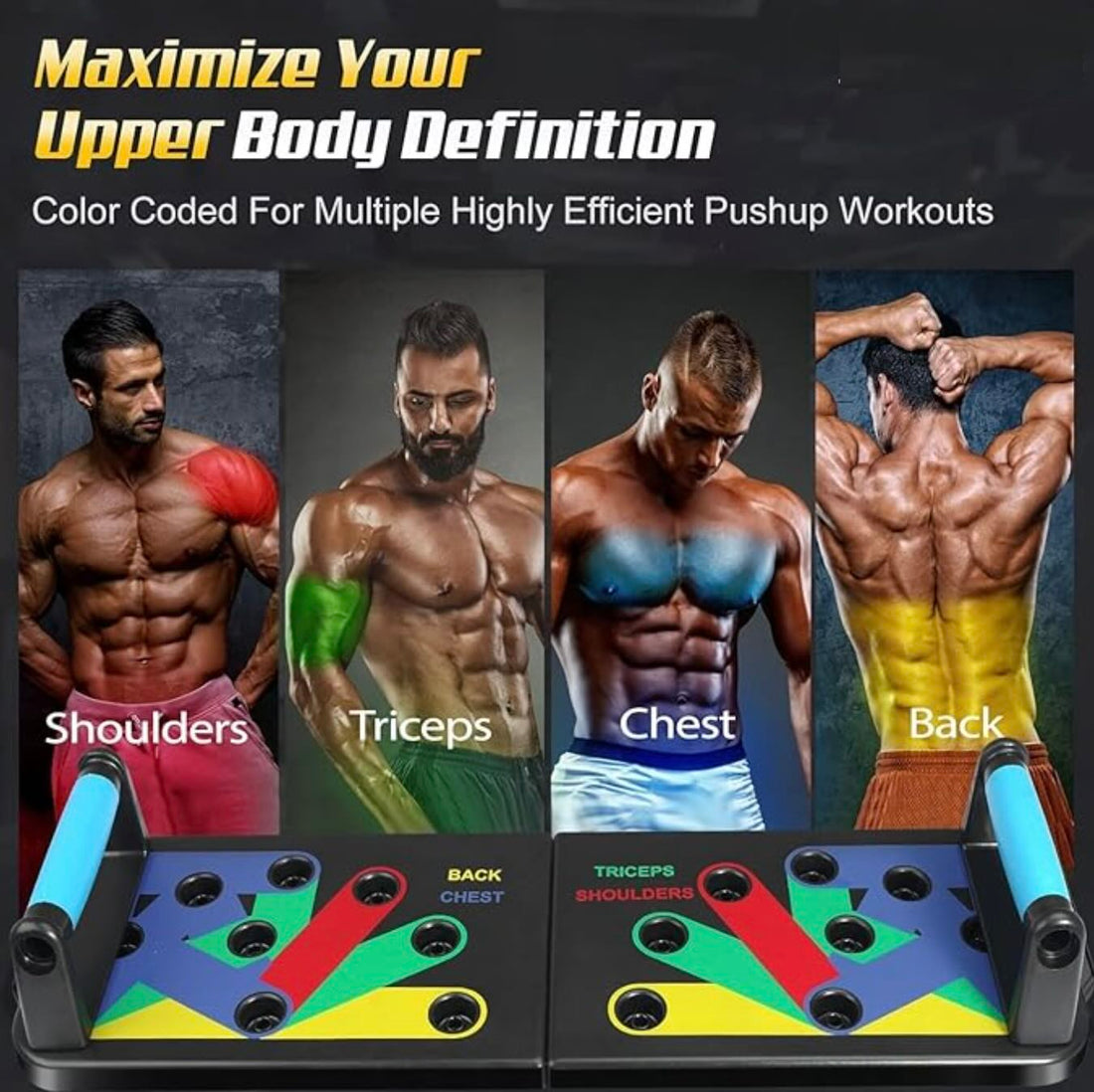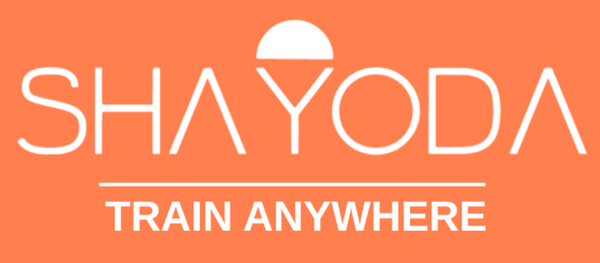
Push-Up Boards: Do They Work and How to Use Them Effectively
Share
Whether you are a novice or a fitness connoisseur, you must have heard of a Push up board as it has become quite the fad in the last few years. Promising to target specific muscle groups with color-coded handles and ergonomic design, they’ve become a home workout staple. But do they actually work? And how should you use one effectively?

Let’s dive deep into the benefits, myths, and best practices for using a push-up board.
1. Are Push-Up Boards Effective?
Yes, push-up boards can be effective, but the results depend on how you use them.
Benefits of Push-Up Boards
- Targeted Muscle Activation: Most push-up boards use a color-coded system (e.g., blue for chest, red for shoulders, yellow for triceps, green for back) allowing you to isolate and train specific muscle groups more efficiently.
- Better Form: By keeping your wrists straight and hands in consistent positions, they reduce strain and encourage proper alignment.
- Variety in Workouts: Multiple handle placements help you vary your angles and ranges of motion—key for stimulating muscle growth and avoiding plateaus.
- Portability & Convenience: They're compact, easy to store, and ideal for home workouts.
Are Push-Up Boards Worth the Money?
If you’re looking to add structure and variety to your push-up routine, they’re a worthwhile investment, especially for beginners and intermediate users.
2. How to Use a Push-Up Board?
Step-by-Step Guide:
-
Understand the Color Code: Refer to the guide that comes with your board. Typically:
* Red – Shoulders
* Blue – Chest
* Red – Shoulders
* Yellow – Triceps - Choose Your Target Muscle Group: Place the handles into the desired color-coded slots.
-
Get Into Position:
* Keep your core tight.* Align your spine and neck
* Hands gripping the handles, elbows tucked or flared based on muscle focus -
Perform Controlled Reps: Don’t rush. Focus on slow, controlled movements for maximum muscle activation.
-
Switch It Up: Change handle positions to work different muscles. Aim for 3–4 variations per workout.
Tips:
- Use a yoga mat underneath for comfort.
- Pair with bodyweight leg exercises for a full-body workout.

Frequently Asked Questions About Push-Up Boards
Q: What is a Push-Up Board?
A push-up board is a fitness tool with color-coded slots for push-up handles, designed to guide hand positioning for targeting different upper body muscles.
Q: Does the Push-Up Board Really Work?
Yes, especially for structured workouts and maintaining form. It helps avoid shoulder injuries from improper hand placements.
Q: Does the 100 Push-Up Challenge Work?
It can build endurance and upper body strength, especially for beginners. However, progressive overload and variation are essential for long-term muscle growth.
Q: Do Push-Up Planks Work?
Absolutely. Combining static planking with push-ups enhances core strength and muscular endurance.
Q: Will 20 Push-Ups a Day Do Anything?
It can improve baseline strength and stamina for beginners, but for muscle gain, you’ll need progressive overload and higher volume.
Q: What is the 12-in-1 Push-Up Board?
A 12-in-1 board offers multiple handle positions for varied push-up angles, targeting 4–6 muscle groups. It's a versatile option for home workouts.
Q: Are Push-Up Bars Worth It?
Yes, they reduce wrist strain, increase range of motion, and help improve push-up form—similar to push-up boards but without targeting guides.

Building Muscle With a Push-Up Board
Q: Can You Build Muscle With a Push-Up Board?
Yes, if you:
- Increase rep range gradually
- Use different positions for variation
- Focus on time-under-tension
- Add resistance over time (e.g., weighted vest)
Q: Can You Gain Muscle Doing Push-Ups?
Yes, especially in the chest, shoulders, and triceps. But to continue progressing, incorporate advanced variations and higher intensity.
Q: Can 100 Push-Ups a Day Build Muscle?
Initially yes, especially for beginners. But your body will adapt. You’ll need more volume, tempo changes, or weighted push-ups eventually.
High-Volume Push-Up Challenges
Q: What Will 500 Push-Ups a Day Do?
- Short Term: Increase endurance, muscular tone.
- Long Term: Risk of overtraining or injury without rest/recovery.
It may not proportionally increase strength or hypertrophy due to lack of progressive overload.
Q: What Will 1000 Push-Ups a Day Do?
- Potentially burn a lot of calories.
- May lead to tendon strain or muscular imbalance.
- Not ideal for muscle building.
Q: What Do 300 Push-Ups a Day Do?
- Good for muscular endurance.
- Can improve definition.
- Not optimal for hypertrophy unless paired with progression.
Q: How Many Push-Ups Per Day Should You Do?
- Beginners: 10–50 push-ups a day.Intermediate:
- 100–200 push-ups a day in sets.
- Advanced: Add resistance or advanced variations rather than high volume alone.
Q: What Do 500 Sit-Ups a Day Do?
They may improve core endurance, but without resistance or variety, they won’t build deep abdominal strength or visible abs.
Q: How Many Push-Ups Does Andrew Tate Do a Day?
Andrew Tate has publicly claimed to do around 500–1000 push-ups a day, emphasizing discipline over science. However, this may not be ideal or sustainable for most people.
Conclusion
The push-up board is a practical and effective tool—when used properly. It’s not a magic bullet but adds structure, safety, and variety to your workouts. Whether you're a beginner looking to build a routine or an intermediate athlete aiming to avoid wrist pain and train smarter, it’s a worthy addition to your home gym.
Push-Up Board + Smart Training = Results.
